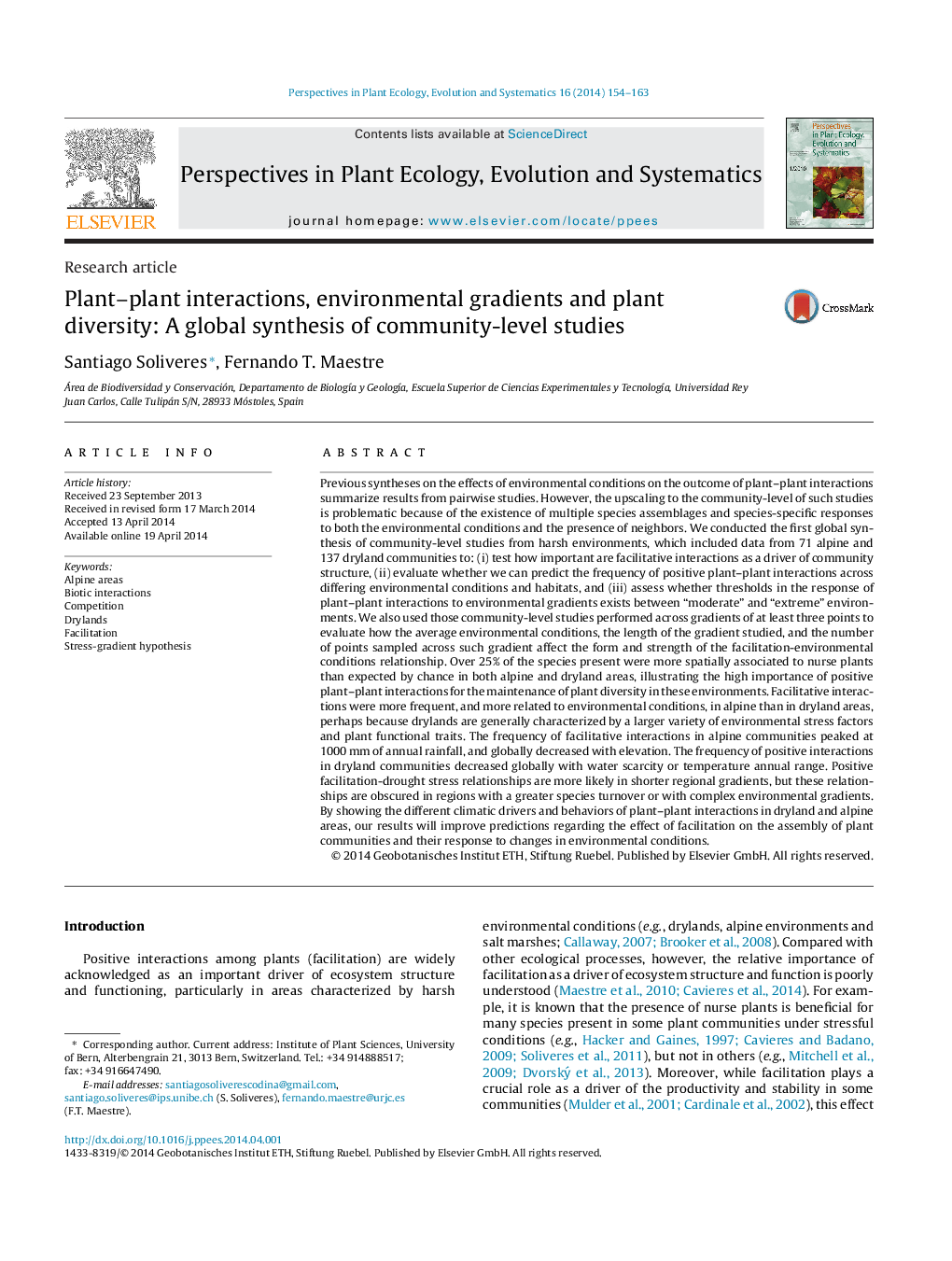| Article ID | Journal | Published Year | Pages | File Type |
|---|---|---|---|---|
| 4401091 | Perspectives in Plant Ecology, Evolution and Systematics | 2014 | 10 Pages |
Previous syntheses on the effects of environmental conditions on the outcome of plant–plant interactions summarize results from pairwise studies. However, the upscaling to the community-level of such studies is problematic because of the existence of multiple species assemblages and species-specific responses to both the environmental conditions and the presence of neighbors. We conducted the first global synthesis of community-level studies from harsh environments, which included data from 71 alpine and 137 dryland communities to: (i) test how important are facilitative interactions as a driver of community structure, (ii) evaluate whether we can predict the frequency of positive plant–plant interactions across differing environmental conditions and habitats, and (iii) assess whether thresholds in the response of plant–plant interactions to environmental gradients exists between “moderate” and “extreme” environments. We also used those community-level studies performed across gradients of at least three points to evaluate how the average environmental conditions, the length of the gradient studied, and the number of points sampled across such gradient affect the form and strength of the facilitation-environmental conditions relationship. Over 25% of the species present were more spatially associated to nurse plants than expected by chance in both alpine and dryland areas, illustrating the high importance of positive plant–plant interactions for the maintenance of plant diversity in these environments. Facilitative interactions were more frequent, and more related to environmental conditions, in alpine than in dryland areas, perhaps because drylands are generally characterized by a larger variety of environmental stress factors and plant functional traits. The frequency of facilitative interactions in alpine communities peaked at 1000 mm of annual rainfall, and globally decreased with elevation. The frequency of positive interactions in dryland communities decreased globally with water scarcity or temperature annual range. Positive facilitation-drought stress relationships are more likely in shorter regional gradients, but these relationships are obscured in regions with a greater species turnover or with complex environmental gradients. By showing the different climatic drivers and behaviors of plant–plant interactions in dryland and alpine areas, our results will improve predictions regarding the effect of facilitation on the assembly of plant communities and their response to changes in environmental conditions.
